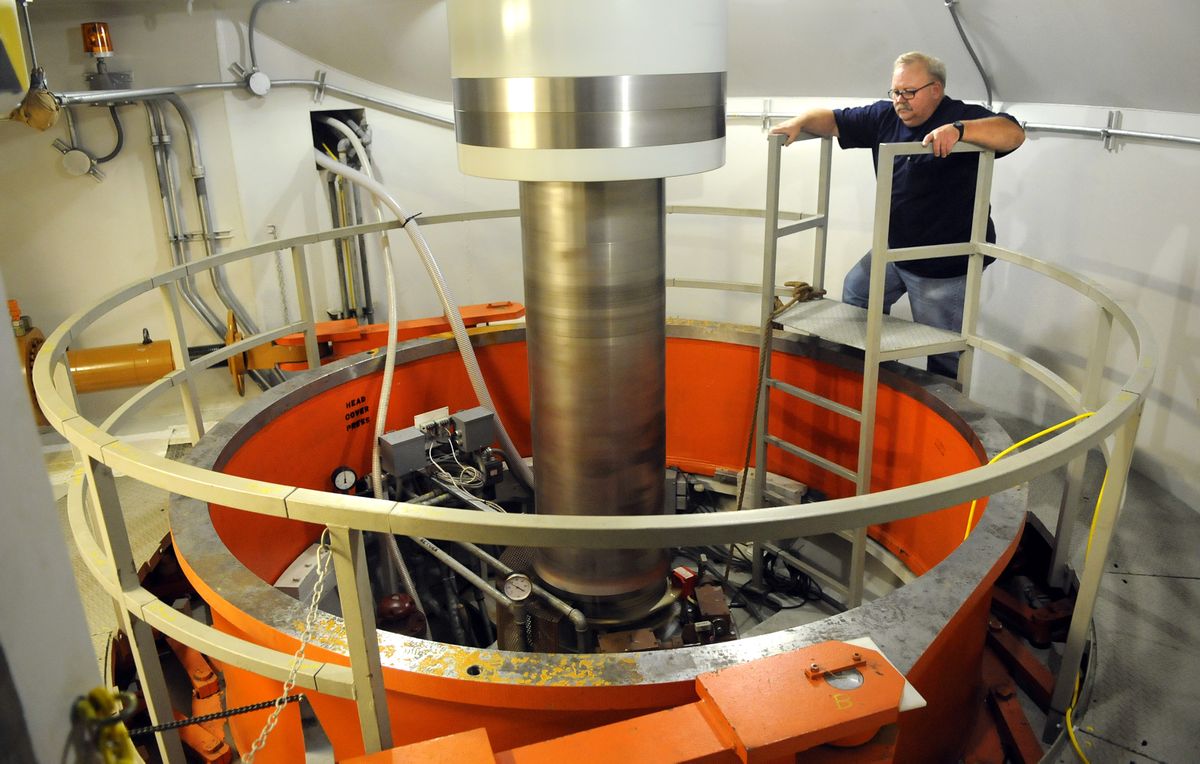Blue ribbon provider of energy also offers fresh view of downtown Spokane

Mike Aho refers to the stretch of the Spokane River below Upriver Dam as “urban wilderness.”
Thick screens of willows and cottonwoods shield paddlers from views of rendering plants, railroad yards and congested arterials, but there’s no masking the ranker smells of the city’s industrial core, or the rumble of overhead traffic as you pass beneath bridges.
As it flows toward downtown, the Spokane is a working river. Yet Aho – the outdoor program director for Spokane Parks and Recreation – counts this five-mile reach among his favorite parts.
“It’s one of the most undeveloped recreation pieces on the river,” he said.
Friday afternoon, as we drifted toward our takeout near the Riverpoint condos along the Centennial Trail, our group of paddlers endorsed Aho’s view.
“This is the way to do rush-hour traffic,” said Lyn Roberts, a kayaker from Sandpoint. “No stoplights, no traffic jams. …What a beautiful way to come into the city.”
We launched the kayaks at Plantes Ferry Park that morning and paddled to Boulder Beach. Our trip took us by two bald eagles roosting in a cottonwood tree. The group portaged around Upriver Dam and pumping station, which is part of Spokane’s city water system.
Downstream from the dam, we caught a small current. It allowed us a relaxed afternoon of paddling.
In the heart of the city, the river is a fascinating place. Near a group of low-income apartments, two boys with a milk jug caught minnows in the shallows.
A turtle lazed on a rock. Blue tarps tucked into the trees signaled the presence of transients. Graffiti on a railroad bridge was written in Cyrillic, the Slavic alphabet.
Mike LaScuola, the Spokane Regional Health District’s environmental health specialist, was part of our paddling group. Nine years ago, LaScuola was riding his bike along the Centennial Trail bordering this section of the river when he noticed Slavic immigrants with fishing poles.
It was the beginning of extensive outreach efforts to make sure that different ethnic populations understand the risks of eating fish from the Spokane River. Fish consumption advisories are now posted in five languages: English, Russian, Spanish, Vietnamese and Hmong.
We exited the river just downstream from Gonzaga University’s campus. As the river flows through downtown, however, its reputation as a working river becomes more obvious.
From Division Street to Monroe Street, the river drops 93 feet. Avista Corp. got its start from the power of those cascades.
“The company was, in effect, born here,” Hugh Imhof, Avista’s spokesman, said in an interview last week.
Electric generation at Spokane Falls started in 1885, but it was a patched-together effort, with several companies operating small hydropower plants. Washington Water Power, Avista’s predecessor, formed in 1889 and eventually bought out or merged with the other companies. Today the company supplies power to 335,000 electricity customers in Eastern Washington and North Idaho.
Avista operates five dams on the Spokane River. Built between 1890 and 1922, the dams produce about 105 megawatts of electricity, or roughly 10 percent of the company’s electric generation.
The Monroe Street Dam is Washington’s oldest continuously operating hydropower project. It was rebuilt in 1974.
“They’re still going strong,” Imhof said of the dams. “They’re very dependable, renewable clean energy.”
But the dams aren’t without controversy. Avista is in the midst of a $28 million effort to relicense the dams through the Federal Energy Regulatory Commission. The license will dictate how the dams operate.
In 2001, Avista started working with government officials, tribes, landowners, environmental and community groups. The utility hoped to reach consensus on thorny issues related to river operation. Controversial topics included flows for recreation and native redband trout; problems with low dissolved oxygen in Long Lake; and water releases to restore a cascade over Upper Falls Dam’s north channel during the summer tourist season.
Many of the controversies remain. The Sierra Club and the Center for Environmental Law & Policy in Spokane recently sued the Washington Department of Ecology over its role in the relicensing effort, saying the agency isn’t requiring enough of Avista to protect water quality in the Spokane River.
Dam licenses last for 30 to 50 years. That’s a whole generation, said Rachael Paschal Osborn, the Sierra Club’s Spokane River project coordinator.
“It’s essential that we do it right,” she said. “We’re talking about what kind of river we will have for the next several decades.”